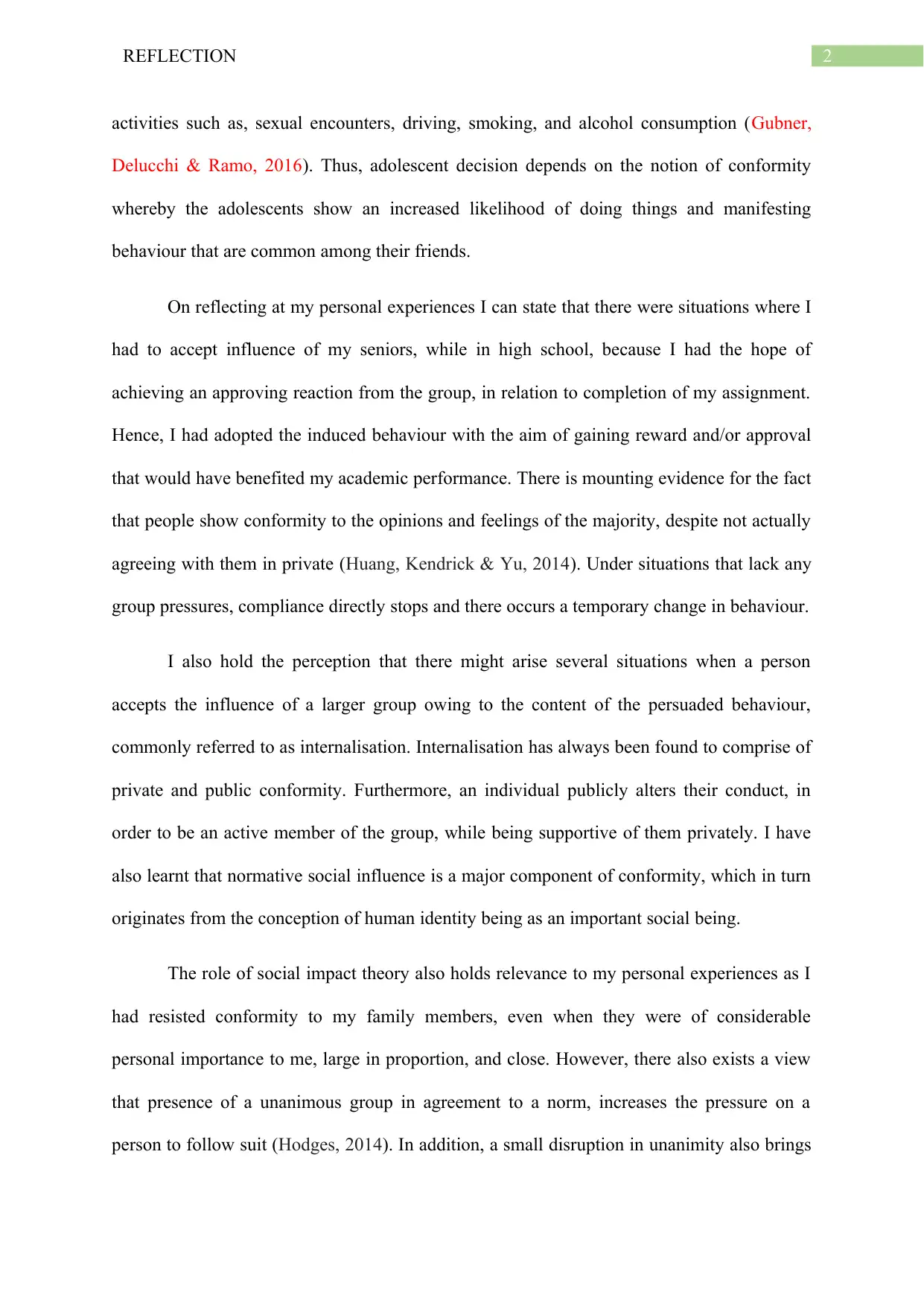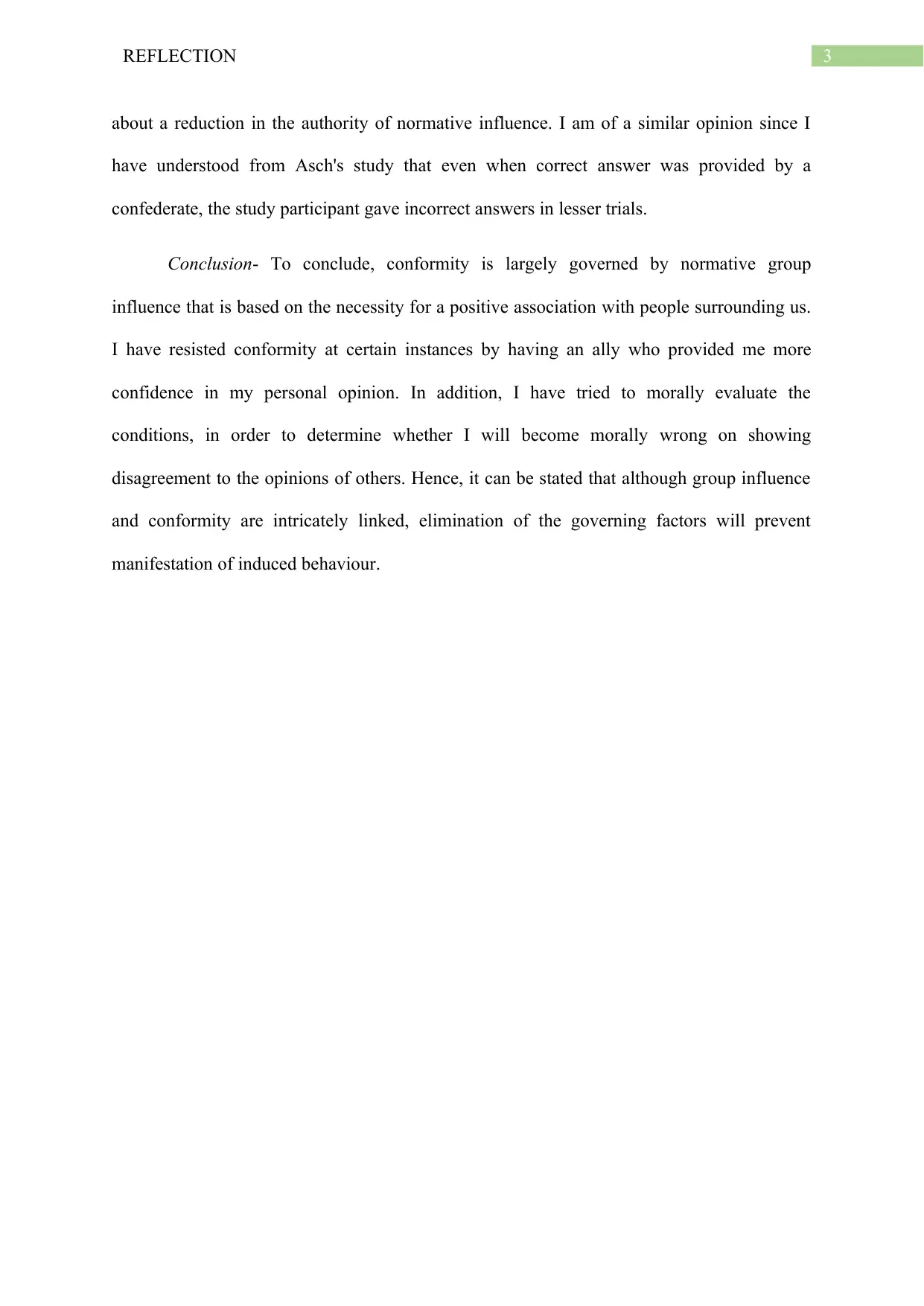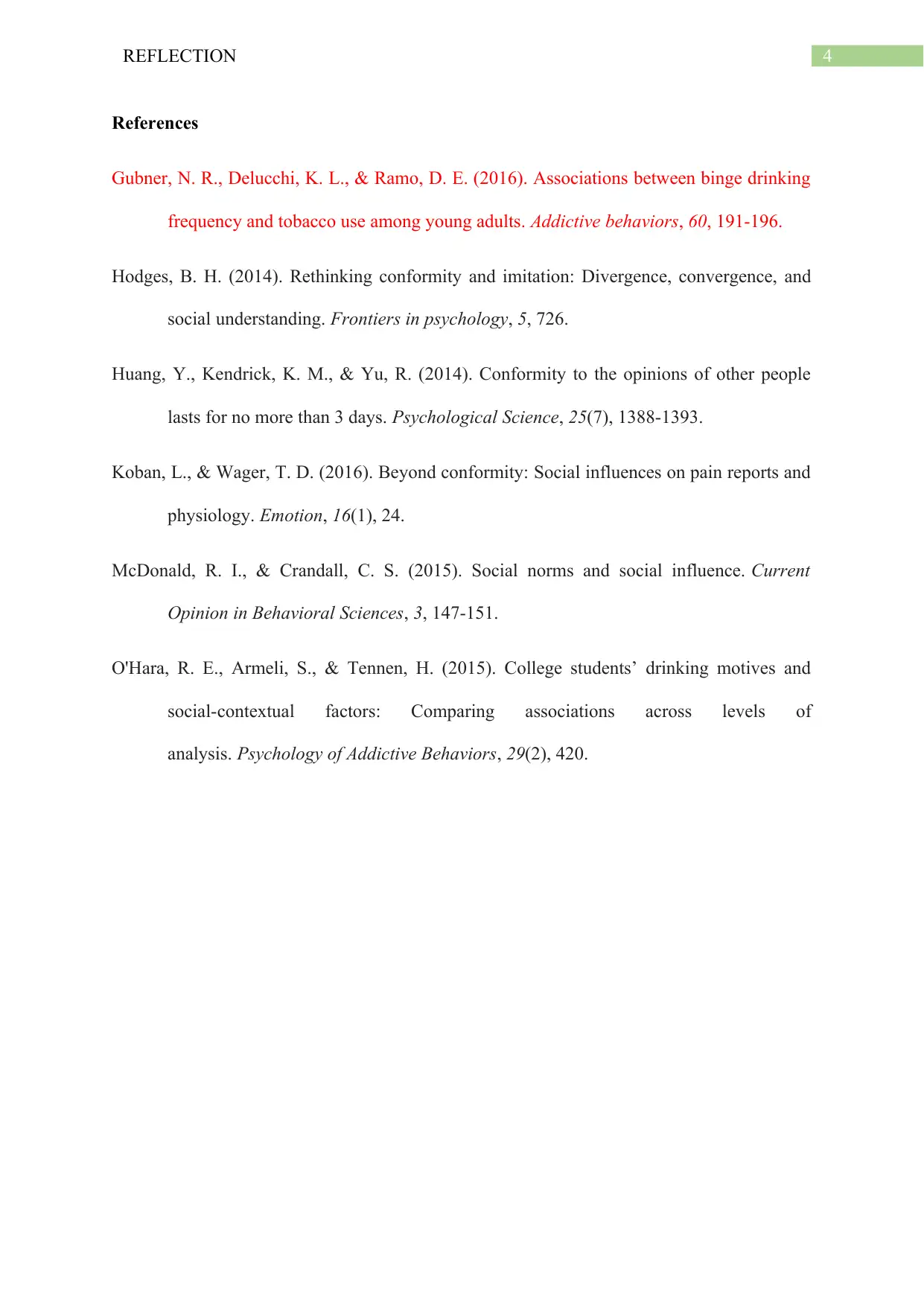PSY101 Reflection Paper: Conformity and Group Influence Analysis
VerifiedAdded on 2023/04/19
|5
|1157
|354
Report
AI Summary
This reflection paper delves into the concept of conformity and group influence, exploring how individuals adapt their behaviors, beliefs, and attitudes to align with group norms. The paper examines conformity through the lens of personal experiences, particularly within the context of college life, highlighting how factors such as group size, peer pressure, and social expectations shape individual actions. It discusses the duality of conformity, acknowledging both its positive aspects, such as fostering social cohesion, and its potential negative impacts on personal decision-making. The paper draws on relevant psychological concepts like normative social influence, internalization, and the social impact theory to analyze various scenarios where conformity plays a role. It provides examples of instances where the author conformed to group norms to gain approval or avoid disapproval, while also detailing situations where they resisted conformity, emphasizing the importance of independent thought and moral evaluation. The analysis integrates insights from studies like Asch's conformity experiment to illustrate the pressures that lead individuals to conform to the opinions of the majority, even when they privately disagree. The paper concludes by reiterating the complex relationship between group influence and conformity and highlights the importance of critical self-assessment in navigating social dynamics.
1 out of 5












![[object Object]](/_next/static/media/star-bottom.7253800d.svg)